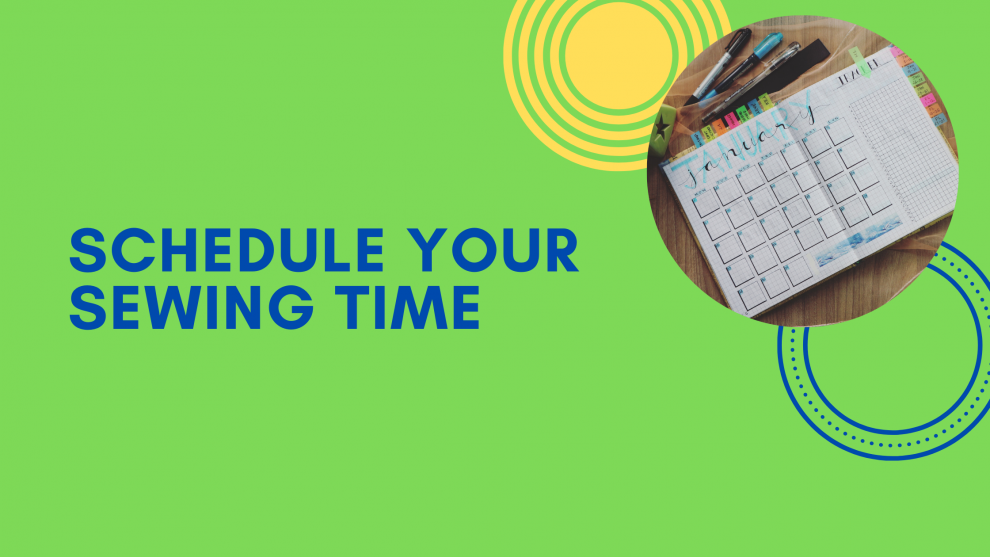
As busy humans, most of us use a calendar of some kind to keep track of what we’re doing and when we’re doing it.
We can add appointments, meetings, birthdays, and anything else that we want to be sure happens on a certain day or a certain time.
But you don’t just have to use your calendar for things like the doctor or dentist and can actually use it to schedule anything that’s a priority for you.
If you’re having trouble finding time in your days and weeks to get something done, consider adding it to your calendar and treating it just like any other appointment. This trick works with your sewing and quilting time, too.

Using your calendar to be more productive in your sewing and quilting practice consists of five steps:
- Find open time on your calendar
- Think about what you want to work on during this time
- Create a new event on your calendar and note what you want to work on
- Follow through when the time comes
- Rinse and repeat!
1. Find Open Time On Your Calendar
This is the first step in scheduling anything on your calendar, from appointments to sewing time. Look at your calendar and find an open block of time that you feel would work well for sewing.
Keep in mind what other events are already planned for that day so you can choose your time thoughtfully. Avoid over-scheduling and attempting to fill in every hour of your day!
Start with just a one or two-hour block of time when you know you’ll be home and have the energy to sew.
2. Think About What You Want To Work On
Benjamin Franklin said, “Failing to plan is planning to fail.”
Think about what you want to work on during this time block. Some questions to briefly consider are:
- What project do I need to finish next?
- What is the next step for this project?
- Will I have the right amount of energy to do this step?
Set a specific goal for your sewing time block. Common goals include cutting out material, sewing blocks, or quilting a section of a quilt.
3. Create a New Event On Your Calendar
It doesn’t matter what kind of calendar system you’re using as long as you’re actually using the system! Some people prefer electronic calendars like Google Calendar, while others still love to plan using paper and pencil.
Add your new sewing event to whatever calendar system you’re using. This event should include:
- Start time
- Stop time
- What you’ll work on
- Any additional notes, such as what materials you’ll need or a reminder about something you want to remember when you start work
4. Follow Through
Adding your sewing time to your calendar only works if you then follow through and head to your sewing space at the scheduled time.
Most electronic calendar systems include the ability to add a reminder alarm that can be set to go off before the actual event start time. This can be really useful if your days are busy or you have a lot on your mind.
Set the alarm for anywhere from 30 to 5 minutes before your scheduled sewing time to help make sure you get started on time.
5. Rinse And Repeat
Once you’ve successfully scheduled and followed through on using a calendar to denote your sewing time, the last step is to repeat the whole process!
If you have a fairly consistent schedule, you may want to use the recurring event function on an electronic calendar to schedule your sewing time weeks or even months into the future.
If your schedule is more sporadic, you’ll need to look at each week individually to determine when your sewing time will fit the best.


Leave a Reply